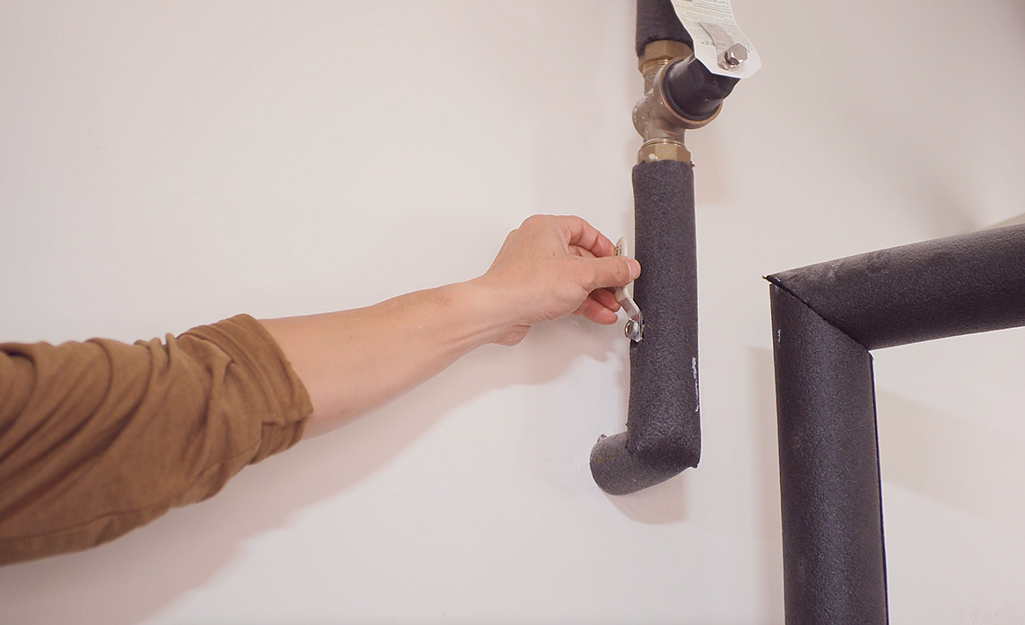Presented here in the next paragraphs you will find lots of sensible content in relation to Should I Repair or Replace a Leaky Faucet?.

Trickling faucets could look like a small inconvenience, however their influence surpasses just the nuisance of the noise. From drainage to sustaining unneeded economic prices and wellness risks, disregarding a leaking tap can bring about numerous consequences. In this article, we'll delve into why it's important to address this typical house issue without delay and efficiently.
Waste of Water
Ecological Impact
Trickling faucets contribute dramatically to water wastefulness. According to the Epa (EPA), a solitary faucet dripping at one drip per secondly can throw away greater than 3,000 gallons of water per year. This not just strains water sources however also influences environments and wild animals based on them.
Financial Expenses
Enhanced Water Bills
Past the environmental influence, leaking faucets can blow up water bills considerably. The collected wastage in time translates right into higher energy costs, which could have been prevented with prompt repair services.
Prospective Home Damage
In addition, extended leaking can bring about damage to components and surface areas bordering the faucet. Water accumulation can create staining, deterioration, and also structural issues if left neglected, leading to added repair prices.
Health and wellness Issues
Mold and Mildew Growth
The constant existence of wetness from a dripping faucet creates a perfect environment for mold and mildew and mold growth. These fungis not only jeopardize indoor air quality but additionally posture health threats, particularly for individuals with respiratory system conditions or allergies.
Waterborne Illness
Stationary water in trickling faucets can become a breeding ground for germs and various other virus, enhancing the risk of waterborne illness. Pollutants such as Legionella germs prosper in stationary water, potentially causing severe health problems when ingested or inhaled.
Do it yourself vs. Professional Repair
Pros and Cons of DIY Fixing
While some may attempt to deal with a dripping faucet themselves, do it yourself fixings come with their own collection of obstacles. Without proper knowledge and tools, DIY efforts can aggravate the concern or lead to incomplete repair work, extending the issue.
Benefits of Employing a Specialist Plumber
Working with a specialist plumber makes certain that the underlying source of the trickling tap is attended to successfully. Plumbing technicians possess the competence and devices to diagnose and fix tap problems efficiently, saving time and decreasing the danger of additional damages.
Step-by-Step Overview to Repairing a Dripping Tap
Tools Required
Prior to attempting to deal with a leaking tap, collect the required devices, including a flexible wrench, screwdrivers, replacement components (such as washers or cartridges), and plumber's tape.
Typical Tap Issues and Their Solutions
Determine the sort of faucet and the certain concern causing the drip. Usual problems consist of damaged washers, corroded shutoff seats, or faulty O-rings. Refer to maker guidelines or online tutorials for step-by-step support on fixings.
Safety nets
Regular Upkeep Tips
To stop trickling taps, perform routine maintenance such as cleaning aerators, examining for leakages, and replacing worn-out components without delay. In addition, think about installing water-saving devices or upgrading to extra reliable fixtures.
Relevance of Prompt Services
Addressing leaking taps as quickly as they're discovered avoids further water wastefulness and prospective damage, inevitably conserving both water and money in the future.
Effect On Building Value
Perception of Well-Maintained Building
Preserving a home in good condition, consisting of dealing with upkeep issues like trickling faucets, improves its regarded worth and charm among prospective customers or renters.
Impact on Resale Value
Qualities with well-maintained plumbing fixtures, consisting of taps, command higher resale values in the realty market. Attending to trickling faucets can contribute to a positive perception throughout building inspections and negotiations.
Environmental Obligation
Private Contribution to Conservation
Taking obligation for repairing leaking faucets straightens with broader initiatives towards water preservation and environmental sustainability. Every individual's actions jointly make a substantial effect on protecting precious resources.
Lasting Living Practices
By prioritizing prompt repairs and adopting water-saving habits, people contribute to lasting living methods that benefit both existing and future generations.
Final thought
Addressing a trickling faucet surpasses mere ease; it's a vital step towards preserving water, lowering monetary prices, and protecting wellness and home. Whether via DIY repair services or specialist assistance, acting to deal with dripping faucets is a little yet impactful means to promote responsible stewardship of sources and add to a healthier, much more sustainable future.
How to Fix a Leaky Faucet: Step-by-Step Repair Guide
A leaky faucet may seem like a simple annoyance, but if it's not fixed promptly, that leak could cost hundreds to potentially thousands. From water damage to mold, mildew, and high water bills, even a tiny leak can be catastrophic if left unattended. Damage like this can even affect the overall value of your home, so it's important to take the right approach for leaky faucet repair. You may need the help of a plumber in some cases, but we've got a few tips you can try on how to fix a leaky faucet before calling the pros.
Four Faucet Types
When you're learning how to fix a leaky faucet, the first step is knowing what kind of faucet you're working with! There are four common types.
Cartridge Faucets
Cartridge faucets come in one- or two-handled varieties. In one-handled cartridge faucets, hot and cold water combines in a single cartridge. In the two-handled versions, hot and cold water are controlled separately and mixed in the faucet.
Ball Faucets
Ball faucets have a single lever you push up and down to adjust the pressure and rotate to change the temperature. A slotted metal ball controls the amount of water allowed into the spout.
Compression Washer Faucets
They're the oldest type of faucet, but they're still used in many homes — especially older ones. Compression faucets have two separate handles that, when turned, raise or lower the washer that seals a water valve. This valve stops water from flowing through the faucet when it is turned off.
Disc Faucets
Disc faucets rarely need to be repaired due to their maintenance-free design. The water flow is controlled by two discs — the upper one raises and lowers against a fixed lower disc, creating a watertight seal. If your disc faucet starts leaking, you may need to replace the seals or clean residue buildup from the inlets.
Fixing a Leaky Faucet
Step 1: Turn Off the Water
Whether you're learning how to fix a leaky bathtub faucet or how to fix a leaky kitchen faucet, always turn off the water supply to your working area when you're fixing a leak. The last thing you want is a flood added to your list of things to fix.
Look for the shutoff valves below your sink or around the tub and turn them clockwise to stop the water flow. If your faucet doesn't have shutoff valves, you may need to turn off the water for the whole house. Check to make sure it's off by turning the faucet on. If nothing comes out, you're ready to start the repair.
Step 2: Take Apart the Faucet
How you disassemble your faucet depends on the type of fixture you have. You can use a flathead screwdriver to remove the caps on top of the handle or handles for cartridge and compression faucets. Inside, you should see handle screws. Unscrew these with a screwdriver to remove the handle.
Disc- and ball-style faucets will typically have an inlet screw near the handle, and removing that will reveal the interior of the faucet.
Detach the Valve Stem
For cartridge- and compression-style faucets, you'll see the inner valve stem or cartridge once you remove the faucet handles. If you have a compression faucet, unscrew the brass valve stem. If you have a cartridge faucet, pull out the cartridge. If your cartridge has been in place for a while, it may require some tools or extra force to remove it due to mineral deposits.
Examine and Replace Parts
Once you've removed the parts, check them out to confirm what needs to be replaced. You may see corroded rubber washers, O-rings, stems, or cartridges. On a ball-style faucet, check the seats and springs for damage.
If you need to repair a leaky disc faucet, check the inlet and seals on the lower disc.
Once you determine what parts must be replaced, visit your local hardware store. Bring the damaged parts with you to ensure you can purchase the correct components to replace them.
Clean Valves and Faucet Cavity
If you've removed a stem or cartridge, you may notice mineral buildup in the faucet's threads. Use white vinegar to clean the valve seat by soaking it for a few minutes, then scrub it away with a soft toothbrush and rinse with warm water. You can also clean the interior of the faucet in the same way.
Reassemble the Faucet
Once your faucet is cleaned and the required parts have been replaced, it's time to reassemble it. Put the pieces back together and slowly turn the water supply back on. Doing this slowly is crucial because too much initial water pressure can damage the new hardware you've just installed.
https://homewarranty.firstam.com/blog/how-to-fix-leaky-faucet

Do you really like reading about Why Is It Important To Fix Your Leaking Tap/Faucet?? Try leaving a remark down below. We would be pleased to see your responses about this review. In hopes to see you back again later on. Sharing is good. You won't know, you may be helping someone out. Thanks a bunch for your time. Please pay a visit to our site back soon.